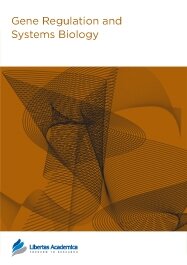

Publication Date: 22 Jul 2008
Journal: Gene Regulation and Systems Biology

1Dept. of Immunology and Infectious Disease, Shinshu University Graduate School of Medicine. 2Dept. of Obstetrics and Gynecology, Shinshu University Medical School. 3Dept. of Laboratory Medicine, Shinshu University Hospital. 4Pathology Division, National Cancer Center Research Institute. 5The Cancer System Laboratory, Research Center for Advanced Science and Technology, The University of Tokyo. 6Japan Science and Technology Agency
Abstract
Patients with uterine leiomyosarcoma (LMS) typically present with vaginal bleeding, pain, and a pelvic mass. Typical presentations with hypercalcemia or eosinophilia have been reported. Radiographic evaluation with combined positron emission tomography/computed tomography may assist in the diagnosis and surveillance of women with uterine LMS. A recently developed risk-assessment index is highly predictive of disease-specific survival. Ovarian preservation does not appear to negatively impact outcome, and the addition of adjuvant therapy after surgical treatment does not seem to improve survival. It is noteworthy that LMP2-deficient mice exhibit spontaneous development of uterine LMS with a disease prevalence of ~37% by 12 months of age. The LMP2 gene is transcribed from a promoter containing an interferon (IFN)-γ-response factor element; thus, the IFN-γ-signal strongly induces LMP2 expression. Furthermore, a recent report demonstrated the loss of ability to induce LMP2 expression, which is an interferon (IFN)- γ-inducible factor, in human uterine LMS tissues and cell lines. Analysis of human uterine LMS shows somatic mutations in the IFN-γ signalling pathway, thus the loss of LMP2 induction is attributable to a defect in the earliest steps of the IFN-γ signalling pathway. The discovery of an impaired key cell-signalling pathway may provide new targets for diagnostic approaches and therapeutic intervention.
PDF (1.19 MB PDF FORMAT)
RIS citation (ENDNOTE, REFERENCE MANAGER, PROCITE, REFWORKS)
BibTex citation (BIBDESK, LATEX)
XML
PMC HTML
Publishing in Air, Soil and Water and Water Research was the best experience I have had so far in an academic context. The review process was fair, quick and efficient. I congratulate the team at Libertas Academica for a very well managed journal.Magnus Karlsson (IVL Swedish Environmental Research Institute, Stockholm, Sweden) What Your Colleagues Say
Copyright © 2012 Libertas Academica Ltd (except open access articles and accompanying metadata and supplementary files.)
FacebookGoogle+Twitter
PinterestTumblrYouTube